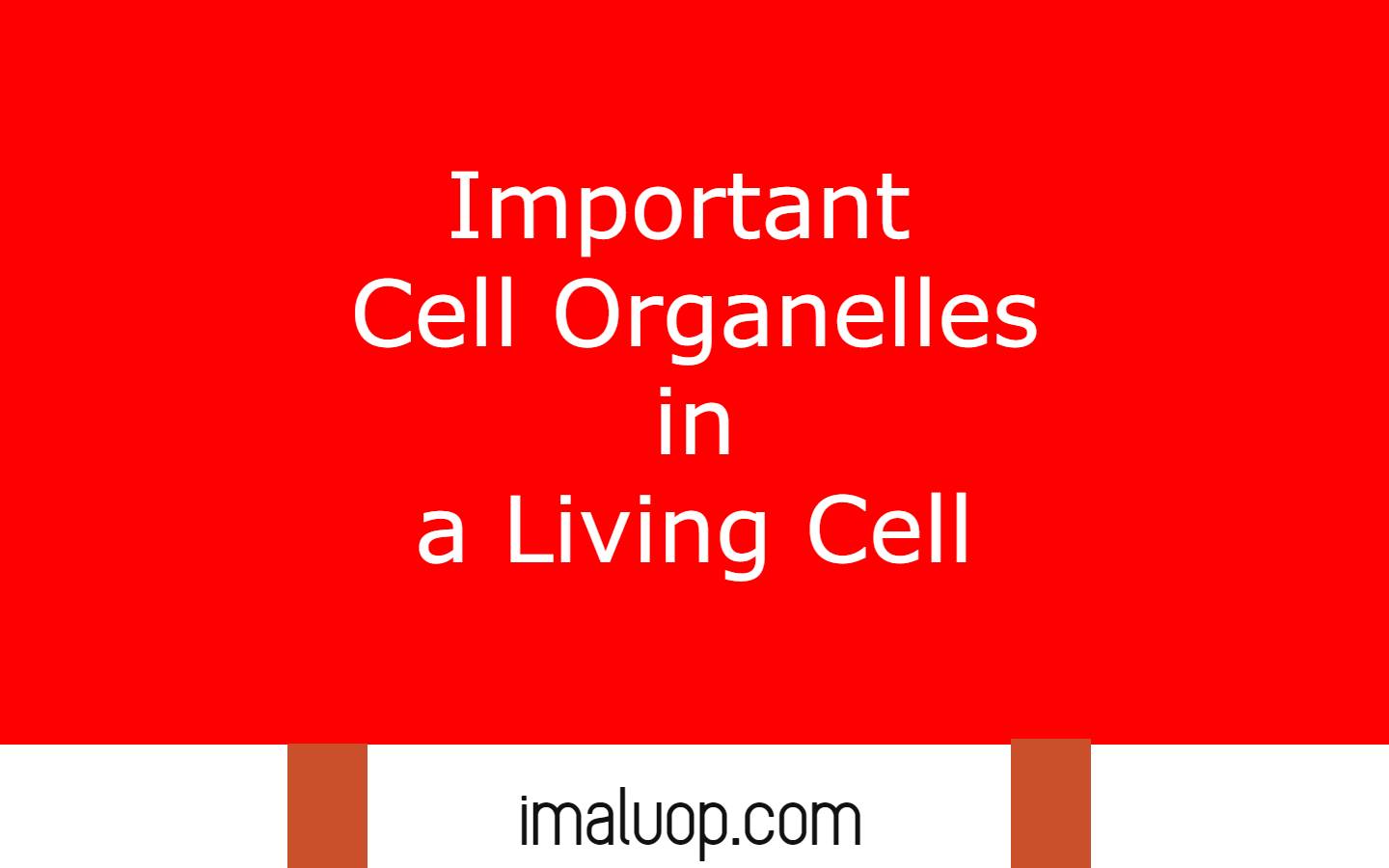Hi, now we are going to discuss some important cell organelles in a living cell and how they contribute to the whole cell function.
Table of Contents
Basic Idea About Cell Organelles:
In a living cell there are various structures which have their own function and some of them are membrane bound while some structures do not have any membrane and their integrated function make a cell living and those structures are known as cell organelles.
Different cell organelles perform different types of function in a cell and depending upon the membrane present in cell organelles cells organelles can be divided into three categories.
Cell Organelles Without Membrane:
In prokaryotic cells membrane bound cell organelles absent so in prokaryotic cells only membrane less cell organelles like ribosome, cytoskeleton present but in eukaryotic the membrane less and membrane bound both types of cell organelles are present.
Cell Organelles With Single Membrane:
Membrane bound cell organelles only present in eukaryotic cells and not present in prokaryotic cells like endoplasmic reticulum, lysosome, Golgi apparatus all are examples of single membrane bound cell organelles.
Cell Organelles With Double Membrane:
In eukaryotic cells some cell organelles are membrane bound but among them some cell organelles have a special character, they are bordered by double membrane as seen in nucleus, mitochondria and chloroplast.
Important Cell Organelles in a Living Cell:
Cell Membrane:
In animal cell and some bacteria cell it is the outermost semi permeable barrier around the cytoplasm which are made of lipid bilayer and membrane proteins and cell membrane protect the cell by preventing different types of substances which are not good for cell and only allow those substances which are not harmful for the cells.
Different theory of cell membrane was proposed by different scientists but among them fluid mosaic model was the most accepted theory and according to this theory cell membrane show fluidity for their lipid bilayer and the lipid present in cell membrane occurs in different forms like phospholipid in which phosphate group is attached with lipid, glycolipids in which carbohydrates chain is attached with lipid and the protein present in cell membrane are two types, transmembrane protein and peripheral protein.
Mitochondria:
It is very important cell organelles because they are responsible for supply of ATP for cellular activities and for this reason they are known as power house of cell and they are very resemble to bacterial cell structure so sometimes it seem that mitochondria was a endoparasitic bacteria which with time evolved into mitochondria.
Mitochondria are an example of double membrane bound cell organelles which can self replicate and this is an example of cell organelles where genetic material DNA is present.
The enzymes present in outer membrane and inner membrane are responsible for production of ATP and in mitochondria ribosomes also present and number of mitochondria different in different cells because the cells which need very much energy have a large number of mitochondria present.
Golgi Apparatus:
In both animal and plant cell cytoplasm a single membrane bound structure is present near nucleus which have some flattened vesicle like structure and tubular structure which process and package different biochemicals and send them to target location.
Ribosome:
It is a very important membrane-less cell organelles which takes part in translation and synthesis protein according to the demand of the cell so they are known as the protein factory of a cell and they present in both prokaryotic and eukaryotic.

Ribosome also present in some cell organelles like in mitochondria ribosome present and they are 70s in mitochondria and in prokaryotic cell but in eukaryotic cell they are 80s and ribose can understand the code in mRNA and join the amino acid to form polypeptide chain.
Read More: Structure of Animal Cells
Hi Everyone!!! Welcome to Imaluop. Imaluop always try to learn some new and he want to share to other people. Here we will try to learn various topics on Science, specially on Biological Sciences.
